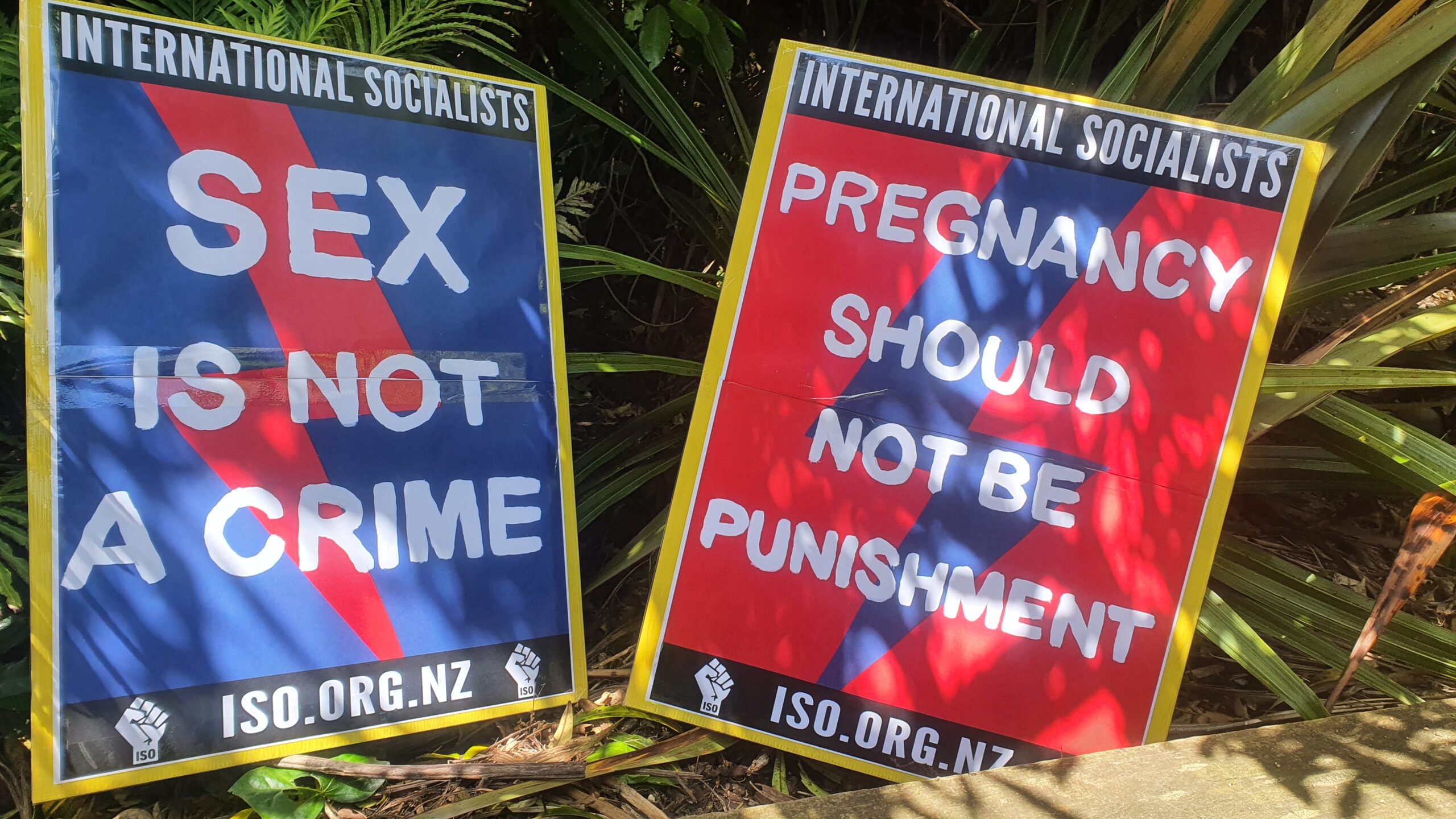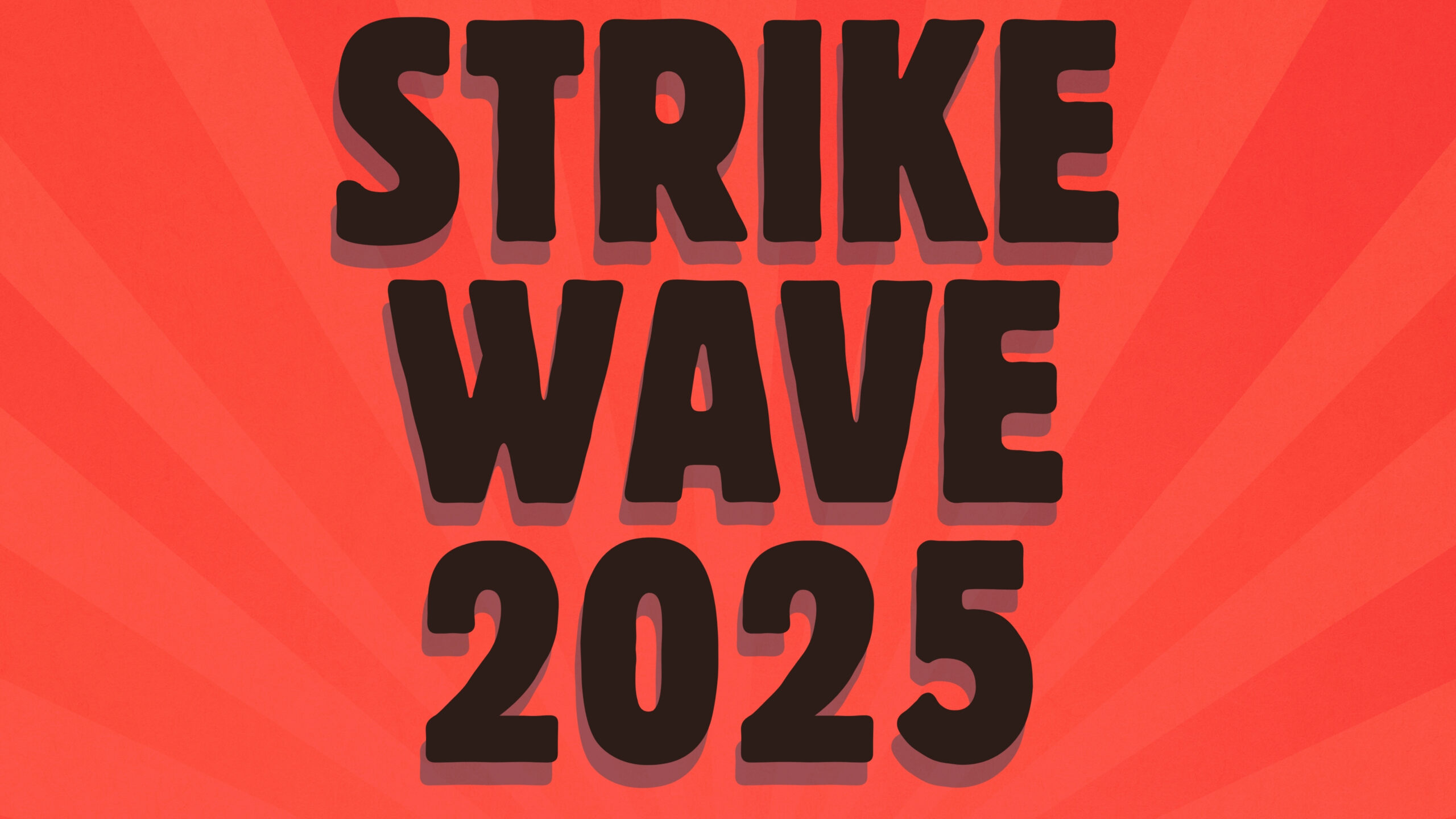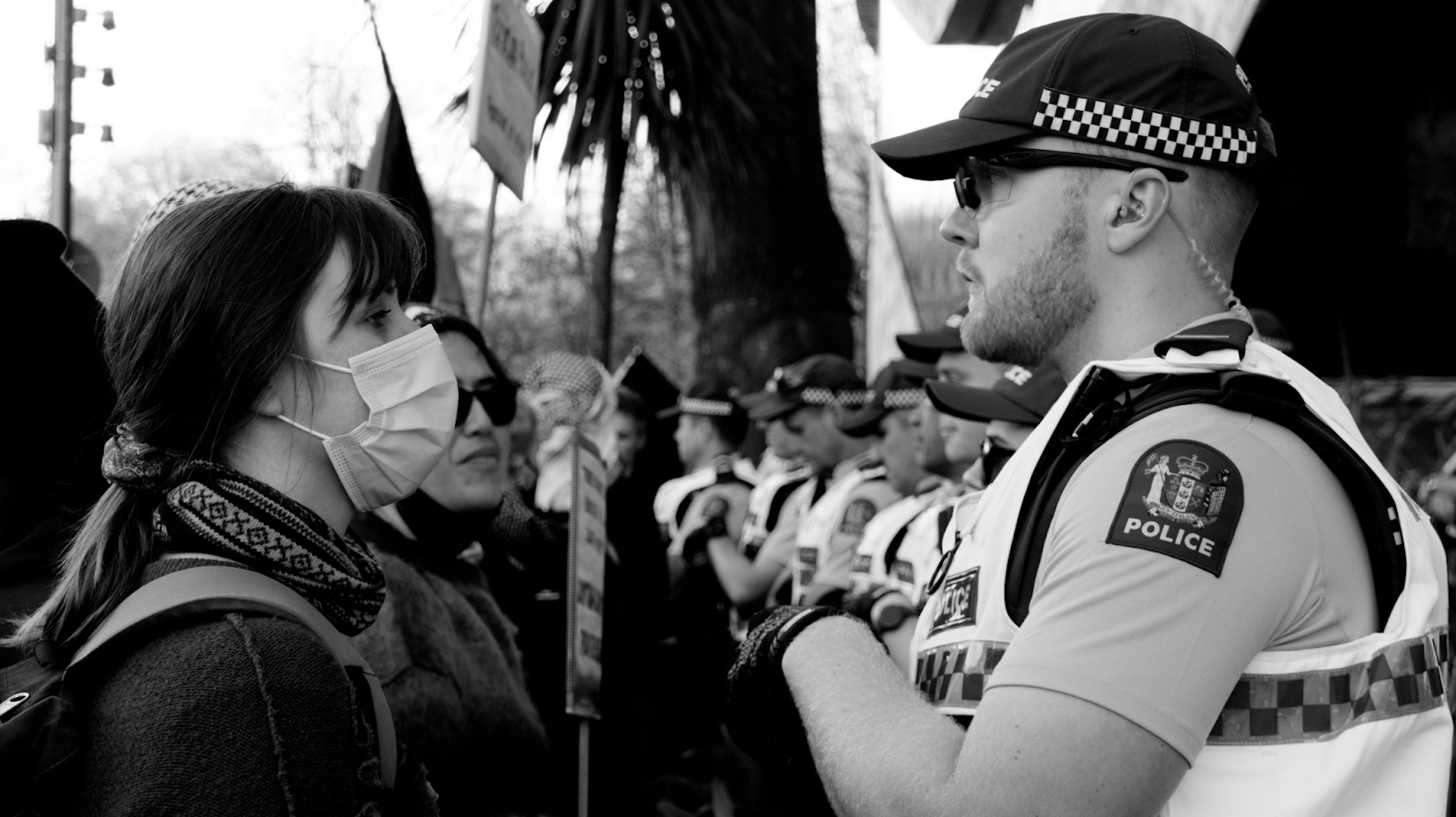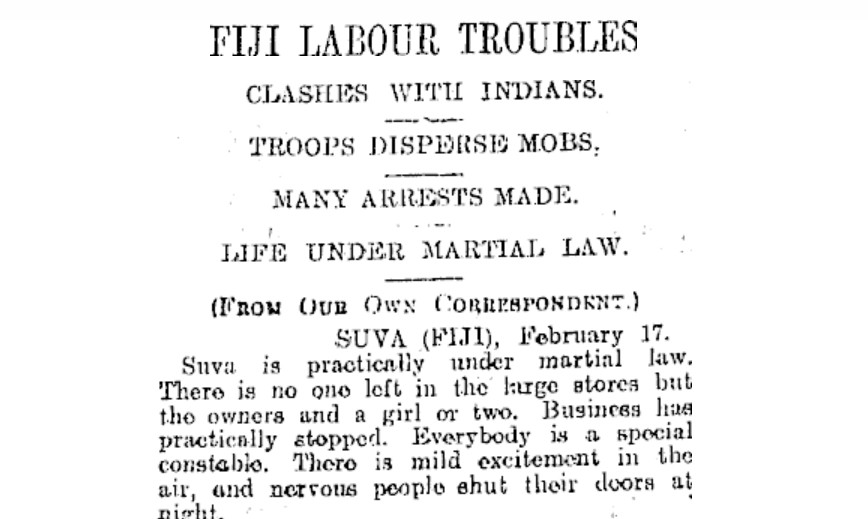This election is not over. Fully 15% of votes remain uncounted; the shape of Parliament is undecided; coalition talks are underway. No single party has the ‘moral authority’, whatever that may mean, to govern. So these perspective remarks are necessarily provisional, speculative, open to correction and criticism. They offer a first attempt to make sense of the election from the perspective of the working class and the long struggle for socialism.
A ‘moral victory’ for National, the Sunday Star Times called it. What hogwash! 46% of the 79% of enrolled voters who cast votes – almost certain to be a smaller percentage once specials are counted – is no ringing endorsement. The combined Labour/Green left vote is up, the most significant revival of the forces of the parliamentary left since 2008. National’s support partners are scattered. Coalition talks go on. There is precious little cheer here for the ruling class. The Labour/Green vote has gone from 36% in 2014 to at least 41.7%, with the figure certain to rise come the end of counting. This is no clear victory for the right.
The International Socialists campaigned through the last few months under the slogan: ‘Kick National Out! Build a Socialist Alternative’. How does that project fare today? Three years ago we opened our post-election analysis calling for a ‘lucid registration of defeat’. Nothing so clear comes from the 2017 election. National seems, from one view, in a towering position: they took the largest share of the vote; they are positioned to continue into an almost-unprecedented fourth term; their Antipodean application of ‘project fear’ has pulled them into victory. But this is a victory shot through with contradictions, tensions, gaps. Their coalition and supporting parties are all destroyed from their association with National; the party was forced to campaign against much of its own record; its future now is in the hands of Winston Peters, a man capable of nursing grudges and carrying out canny bargaining. If the prospect of a fourth National term is frustrating, these results give few causes for the ruling class to cheer.
But reflecting on how the election result might unravel gives us the chance better to prepare for the struggles to come, and to consider the terrain on which they will be contested.
National: the right drops back
Viewed through one lens, this election represents an astonishing success for the National Party. New Zealand politics has been stable over the last decades in ways which must be the envy of ruling classes across the advanced capitalist world. No Bernie Sanders or Jeremy Corbyn has emerged from the left, and no new formation on the racist right has had any real traction. Hobson’s Choice and Don Brash’s finger-jabbing on television remain embarrassing reminders of middle-class bigotry rather than genuine mobilising tools.
National’s party vote in 2017, after close to a decade of right-wing rule, is not so far from the numbers they were elected on in 2008. This is, on any measure, a remarkable political success. What explains it? This is, in part, a reflection of the relative health and stability of the New Zealand economy. We do not downplay the real social misery in this country by observing that National has carried out nothing like the austerity programme of the Tories in Britain. In part it shows the skills of Steven Joyce, John Key, Bill English and Paula Bennett in the traditional Tory arts of deceit, dishonesty and dirty politics. 2017, like 2014 before it, saw National manipulate fears around taxes and budget black holes with the skills of master fabricators. Joyce’s budget “black hole” had, bourgeois economists tell us, no relation to the truth, but he and English were content to keep at it until the darkness spread.
‘Delivering for New Zealanders’, the National slogan went. Delivering for the rich sums their programme up better, and their voting base reflects this. National’s strongest areas are the country’s wealthiest: 61% of the party vote in Epsom, 63% in Tāmaki, 54% in Ilam, 53% in Wellington’s Seatoun, 60% at Mount Maunganui.
National’s vote must reflect some working-class support too, and these results show Key and English’s success in restoring National to its historic status as the ‘natural’ party of political rule. The convulsions of the 1980s and 1990s broke up many of the affiliations of the two major parties. Labour suffered a significant split in 1989 towards the end of its initiation of neoliberalism; National split through the early 1990s as it pushed through Ruthenasia, producing, among other mutant offspring, New Zealand First. Support for the big two parties declined through the 1990s as the electoral map fractured across left and right. John Key and Bill English have rebuilt National as a party able to convince sufficient numbers of workers that they are ruling in the ‘national’ interest rather than as a party of open class rule.
Reflecting on how ruling classes rule, and how the working class might come to take power, Antonio Gramsci theorised what he called the ‘historical bloc’. ‘The structure and the superstructure,’ for Gramsci, ‘form a “historical bloc”. In other words, the complex and discordant ensemble of superstructures reflects the ensemble of the social relations of production.’ Big business, small farmers, wealthy professionals do not share identical class interests, but National binds them into a coherent political force. National has intellectual apologists (Mike Hosking), narratives (“delivering for New Zealanders”) and institutional-organisational compromises and connections between urban strongholds like Khandhallah and Remuera and rural towns in Taranaki-King Country (59% support for National) to create the myth of ‘national’ rule in the ‘national’ interest. This has been the party’s historic success in sustaining ruling-class hegemony, the complex of anti-worker ideas accepted as ‘common sense’ by enough workers for the ruling class to govern without recourse the force and repression. The results in Hutt South show this, with National (only just) leading Labour in party votes 42.9 to 39.1%.
It is important not to overstate this success: a big chunk of the population did not vote, so National did not command 46% of the population’s support, just 46% of voters. And it’s hard to discern voting behaviour, income and class position from the raw statistics. Without detailed exit polling, and before research becomes available, these are speculative remarks.
In New Zealand the clearest expression of this hegemony and National’s ‘historical bloc’ is the country-city divide fostered and sustained by National. The party of urban professionals and subsidiser of big agriculture business – no friend, in other words, of the farm labourer – can mobilise rural workers alongside capitalist farmers in protests against Labour’s tax plans. Equally importantly, in the big cities – Auckland above all – National has managed to convince some better-off workers, and recent migrant workers that they are the party of stability, jobs, certainty. It took hard work ridding the party of its reputation as the political home of white, male, Pākehā reaction as a part of this strategy, and 2017 shows how it continues to pay off: at least 12% of the parliamentary caucus are Māori and 33% are women. Hardly representative of wider society, to be sure, but vastly more diverse than the mid-1990s when Georgina Te Heuheu was the party’s sole Māori MP. And, for all this, the red/blue divide across the country sticks to a country/city, wealthy/worker split much as it has ever since World War Two.
National is back now at its historically ‘normal’ levels of support, with the kind of percentage that saw it the party of government through most of the post-war era. Holyoake won in 1969 with 45%, Muldoon in 1975 with 47%, Bolger in 1990 with 47%, Key in 2008 with 41%. Deep historical continuities reassert themselves.
Adjust the lens a little, however, and this victory seems much less certain. The right’s combined vote has, as Bryce Edwards points out, fallen. “The vote for centre right parties has actually declined significantly at this election”, Edwards argues. “At the 2014 election, the aggregate vote for National, Act and the Conservatives was over 52 per cent. This year, the final result for those parties is projected to be little more than 45 per cent. What’s more the National Party has now lost allies – United Future and the Maori Party are gone from Parliament, and Act’s party vote has halved. Basically, National has cannibalised the vote of other right-wing parties. In devouring its coalition partners, National might now look stronger, but in reality, fewer voters are actually supporting parties of the right.”
Where New Zealand First’s votes come from complicates this picture, but their vote fell overall from 2014 also. The right lost votes.
National’s support partners are roadside casualties from their role in the last decade. The Māori Party, essential passengers early on as John Key presented a liberal, bicultural face for his anti-worker programme, have been destroyed, and punished, rightly, by Māori workers for overseeing continued immiseration. Peter Dunne’s United Future is a thing of the past. ACT is nothing more now than the clowning of David Seymour. National, in competing hard with New Zealand First in the regions, may have made an enemy of their most natural ally in the current parliament.
More importantly, National and Bill English were forced to campaign against much of their own legacy. Under the glare of Labour’s restored lighting, National dropped much of their early campaign talk of law-and-order, beneficiary crackdowns and boot camps in favour of shameless grabs at the reforms of the Fifth Labour government. Extending paid parental leave; tackling child poverty; cleaning up polluted rivers: these all became, as the campaign continued, reasons given for voting National! One party leaflet distributed widely across campuses claimed “interest-free student loans” as another National delivery. It’s a wonder English managed to keep such a straight face through all the debates, so outlandish were his policy contortions.
This rhetorical turn ‘left’ has two consequences. For starters, it shows National as programmatically and ideologically spent. There is no mandate here of the kind John Key could argue for state asset sales. Secondly, both major parties campaigned around raising expectations for social spending and addressing inequality. Poverty and inequality are now mainstream issues and problems. That can only be a good thing for class struggle.
Why would someone vote for National? Many disappointed leftists on social media the morning after blamed a greedy, uncaring country for the result. This might be emotionally cathartic, but it does nothing to help us rebuild. The rich and their allies vote with clear class interests, obviously: business backed National, and had good reasons to do so. But the situation for right-wing voting workers is more complex. A whole generation now has grown up in a period of a prolonged downturn in class struggle, with little or no experience of workers’ activity, trade unionism, or social contest. The Auckland housing ‘boom’ has meant, for workers who own houses, enormous increases in the values of their only real asset both exciting and unnerving: exciting, as their wealth seems somehow to have ballooned around them, and unnerving, as this wealth is fictitious, bound to a property they may not be able to afford to sell and with no real impact on their weekly spending power. Large mortgages in a period of unusually low interest rates, and stable wages in years when unemployment is all too visible (one in twenty is the new normal) and closures and shutdowns come up in the news all help produce feelings of insecurity, fear and anxiety. The status quo feels less of a risk than something different. National’s success, this sketch suggests, is more Project Fear than Project Greed.
Dismissing all the workers who voted National as irremediably selfish or short-sighted will not help overcome that challenge. Election 2017 represents no social shift right.
Labour/Greens Gains
Labour’s rise under Jacinda Ardern reinforces how partial and uncertain National’s success has been. If Labour, with no change in policy, could achieve such a remarkable gain through change of leader inside the campaign period, what might a coherent opposition have achieved in the last three years?
And Labour did make gains: across Dunedin Labour gained at least 7 593 votes compared to 2014, while National’s total dropped 5 039. Labour took 47% of the party vote in the city. In Christchurch Central Labour gained at least 3195 votes compared to 2014, while National lost 2320 votes. Across Wellington Labour gained almost 8 000 votes from 2014 while National lost over 10 000. Some of Labour’s gains came at the expense of the Greens, certainly, but some of it was taken also from former National voters. The party has 17 new MPs.
It bears repeating: these are preliminary results and the left will be seen to have done better when special votes are included. What was presented as a comprehensive National victory on election is in fact a much more closely-run thing. The winner remains uncertain.
Labour retains its base in the poorest, brownest, most concentrated blue-collar working-class parts of the country. Talk on the far left of the party coming unmoored from reformism, or of its future being seriously in doubt, is shown up to be wrong: 82% of votes cast in Cannons Creek were for Labour; 80% in Waitangirua; 69.3% across Māngere; 64% in Manukau East. Labour took 59% of party votes across the Māori electorates, National a derisory 7%.
Labour won all the Māori seats, campaigning against the Māori Party’s association with National rule. Māori politics cannot be reduced to class, to be sure, and there are class divisions within the te Ao Māori. Racial oppression and class identification intersect. Class cannot – as so many commentators seem to dream – be wished away. The Māori seat results reinforce this.
What then of Auckland? Is it any surprise, then, that in a city of migrants – over 40% of Auckland born overseas – Labour’s anti-migrant rhetoric turned voters away? Whatever success National has had in two-year long encouraging new migrant workers to see it as their political home is the fault of Labour’s anti-migrant stance.
And the Greens? Metiria Turei’s treatment by the media for standing with unemployed workers showed the limits of what is acceptable in mainstream politics currently. Her treatment showed a uniform contempt towards, and refusal to recognise, the realities of beneficiaries’ lives. All of this, accepted, disgracefully, by Ardern, brought the Greens down. Rats in their own ranks did not help either: good riddance to the bad rubbish of Kennedy Graham and David Clendon.
On the preliminary results, Green support halved in Dunedin between 2014 and 2017 and fell by close to 14 000 votes in Wellington. These statistics will change, as the Greens traditionally do well in special votes. But, given that Metiria Turei injected progressive, pro-working-class demands around benefits and against the WINZ regime, the picture is sobering: a collapse in traditional urban bases and no increase in the most unemployed and poorest parts of the country. Impressive, activist candidates across South Auckland could not stem the flow: the Green party vote halved in Manukau East, Māngere and Manurewa, falling below a thousand in each. Left-wing candidates across the Māori seats saw similar drops in party vote from 2014.
The Greens fell back on their base of support, doing well amongst younger voters and in wealthier electorates. Victoria University advance polling booths took over 30% for the Greens, with Greens and Labour taking some three-quarters of votes. The Greens took 33% at Massey University Wellington and between 20 – 25% at Otago, Canterbury and Auckland. The student vote was solidly Labour-Green.
The Auckland pattern from previous elections remains. The Greens took 13% in Auckland Central, 12% in North Shore, 7.5% in Epsom, all above the national average, but only 2.3% in Manurewa, 2.6% in Māngere, 4.6% in Te Atatū.
These results do not mean that Greens voters are all petit-bourgeois. There are students renting in Epsom just as there are business owners in Māngere. But these initial figures show tensions. The campaign for unemployed workers’ rights – a campaign the ISO welcomed and solidarized with – seems not to have translated into increased votes from the oppressed and unemployed. Young workers and left-wing party activists cannot make their home alongside wealthier professionals indefinitely. If the Greens are denied a chance at government yet again there are three more years to keep their contradictions in check. Examples of Green Parties taking state power and assuming responsibility for managing capitalism, from Australia and Germany, do not encourage hopes for a happy ending for the party’s left.
There is little to say beyond here. TOP, Gareth Morgan’s vanity project of policy-wonk Utopianism, sucked enough votes from the Greens to damage them and reduce the power of anti-National opposition in parliament. It deserves our contempt and its own oblivion.
On the preliminary results New Zealand First’s vote is down on 2014 and once the special votes are counted the party will be seen to have slipped even more. All eyes of political pundits are analysing which of the major parties lines up most with New Zealand First’s policies. New Zealand First is a rightwing populist party that appeals to the petit-bourgeoisie by playing on their fears of both the organised working class and big business, binding a toxic mix of race-baiting and social conservatism through Peters’ blend of bluster and blethers. New Zealand First rejects economic and social liberalism. It is for economic nationalism, and state intervention, which aligns more with Labour. New Zealand First’s social conservatism aligns more with the National Party. Because of New Zealand First’s opposition to neoliberal economics, many, including amongst the union staffs, mistakenly place New Zealand First on the left. This is nevertheless a pro-business party and no friend of the working class.
The ruling class will be unhappy at the election result. For the last 9 years it has had a government which retained its full confidence. Now, there is uncertainty. The neoliberal agenda has stalled as even the National Party has been forced, by electoral competition with Labour, to offer poverty alleviation and to stay clear of cuts in the public sector. A National New Zealand First government will a weak government with no clear direction. A Labour-Green-New Zealand First government does not strike any fear in the capitalist class, especially as New Zealand First’s involvement will be a moderating influence. However, from the ruling class point of view, it would have the similar defects as a National-led regime: no forward march of neoliberalism and proposed strengthening of public services. However, the electoral promises of any of the parties could come to nought if world capitalism enters a slump during the coming period; then all bets will be off as either a left or right government will seek to make the working class pay.
If New Zealand First make the choice, a Labour-led government would be preferable. Labour’s campaign, with its promises on students’ allowances and fees, on homes and on public services, has created hopes within the working class. The expectations raised may translate into a recovery of fighting spirit and confidence that the working class desperately needs. Socialists will be at the forefront of demanding that Labour’s and the Greens’ promises are kept and we will seek to build a left opposition to any anti-working class moves. On the other hand, a fourth term of National will be demoralising, in the short term at least. As long as National are in government, workers will look to the Labour as the alternative government.
Whatever government is formed, the tasks of socialists remain twofold. One is to rebuilding the kind of fighting trade union movement we need – with a socialist current running through it arguing for workers’ self-activity. Equally, and related to that self-activity, we are for building a socialist party to the left of Labour composed of the militant industrial and political minority. For that we need what Ngāi Tahu often call ‘he manawa tītī’, the endurance and patience tītī draws on flying vast distances across the oceans. Our tasks remain, our need for endurance and patience is as strong as ever. But ours is what Daniel Bensaïd called an impatient slowness or a slow impatience: arm yourselves with a ‘slow impatience’, Bensaïd told revolutionary socialists, in order to be able to be ready to intervene in and change the world. This first assessment tries to understand New Zealand as it is now so we are ready for the when the ‘gymnastics of the possible’ shift and our side is better placed to change it.
Sources
Some caution is needed with statistics: we are comparing provisional results from 2017 with final results from 2014 here as the final results from this year’s election will not be available until after October 7. They are being used as rough measures only, and special votes may tip some figures considerably. The quote from Gramsci is taken from Notebook Eight, note 182 in Antonio Gramsci, Prison Notebooks, vol. III, trans. Joseph A. Buttigieg (Columbia University Press, 2007).









